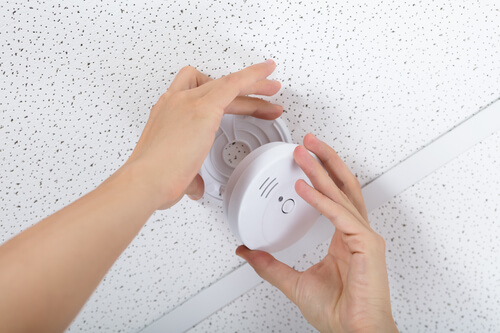Carbon monoxide (CO) is an invisible threat—odorless, colorless, and tasteless—earning its reputation as the “silent killer.” It can leak from furnaces, fireplaces, and gas appliances, quietly building to dangerous levels in your home. In this guide, you’ll learn what CO is, how it endangers your family, and the critical steps to prevent poisoning, with expert tips and resources from Around the Clock Heating and Air Conditioning.
What Is Carbon Monoxide?
Carbon monoxide forms whenever fuels like natural gas, oil, or wood don’t burn completely. A properly functioning furnace vents CO safely outdoors through a flue. But cracks in heat exchangers or blocked vents can allow CO to spill back into your living spaces. Because you can’t see or smell it, you need active detection and regular maintenance to stay safe.
The Real Danger of CO Exposure
CO binds to hemoglobin in your blood more readily than oxygen, starving organs of life-sustaining oxygen. High levels can cause sudden collapse and death; lower levels produce flu-like symptoms that worsen over days or weeks, making early detection critical. According to the CDC, over 400 Americans die annually from unintentional CO poisoning, with thousands more requiring emergency care.
How CO Poisoning Occurs
- Incomplete Combustion: Cracks, blockages, or improper burner tuning cause fuel to burn inefficiently.
- CO Ingress: The gas leaks into your home instead of venting outside.
- Blood Oxygen Deprivation: CO displaces oxygen in red blood cells, leading to tissue damage and organ failure.
Common Symptoms to Watch For
- Headache, dizziness, and nausea
- Confusion, disorientation, or “brain fog”
- Shortness of breath and chest pain
- Loss of consciousness (in severe cases)
Symptoms can mimic the flu, so don’t ignore sudden, unexplained illness—especially if multiple household members are affected.
3 Steps to Prevent CO Poisoning
1. Schedule Annual Furnace Maintenance
Before each heating season, book a checkup with our certified technicians. We’ll inspect your heat exchanger, clean burners, and verify safe ventilation. Regular tune-ups catch cracks or leaks early—avoid costly breakdowns and dangerous CO escapes. Learn more about our Heating Repairs & Maintenance services.
2. Install & Test CO Detectors
Place detectors on every level—especially near bedrooms—and at least 15 feet from fuel-burning appliances. Test them twice a year and replace batteries when you change clocks in spring and fall. If an alarm sounds, evacuate immediately and call 911.
3. Keep Vents, Chimneys & Flues Clear
Blocked chimneys or vents trap CO indoors. Schedule an annual chimney sweep and flue inspection to remove soot, nests, and debris. For expert chimney care, explore our Duct & Chimney Services.
In-Depth Resource
For a full breakdown of pre-season safety checks and airflow performance, see our guide: Why Regular HVAC Inspections Are Critical for Los Angeles Home Safety.
Frequently Asked Questions
What’s the difference between CO and smoke detectors?
Smoke detectors sense particles from fire; CO detectors sense the gas itself. You need both for complete home safety.
Where should I place CO detectors?
On every floor, outside sleeping areas, and at least 15 feet from fuel-burning appliances for accurate readings.
How long do CO detectors last?
Most have a 5–7 year lifespan. Check the manufacturer’s date and replace units promptly at end-of-life.
Can I smell a CO leak?
No—CO is undetectable by human senses. Always rely on functioning CO detectors to warn you.
What should I do if my CO alarm goes off?
Evacuate immediately, call 911 once you’re outside, and do not re-enter until a professional confirms it’s safe.
Call The Experts
Don’t leave your family’s safety to chance. Contact Around the Clock Heating and Air Conditioning today for a pre-season furnace tune-up, CO detector installation, or chimney inspection.
➡️ Schedule Your CO Safety Check Now!
Helpful Resources
- CDC: Carbon Monoxide Poisoning Basics
Learn about CO sources, health effects, and prevention strategies.
Learn More - EPA: Carbon Monoxide Prevention and Safety Tips
Detailed guide on proper appliance use, detector placement, and household safety.
Learn More - CPSC: Carbon Monoxide Information Center
Advice on selecting, installing, and maintaining CO alarms, plus generator safety.
Learn More

